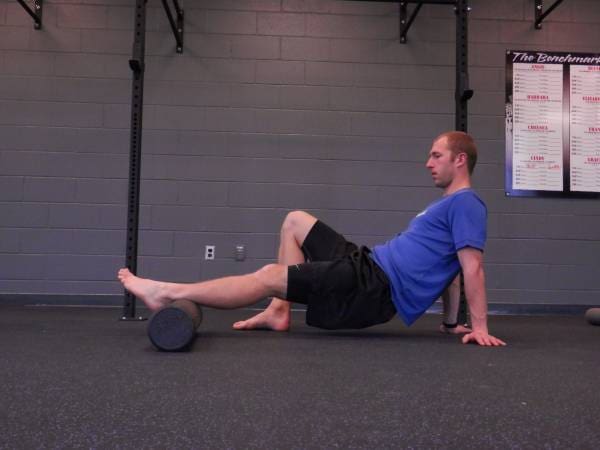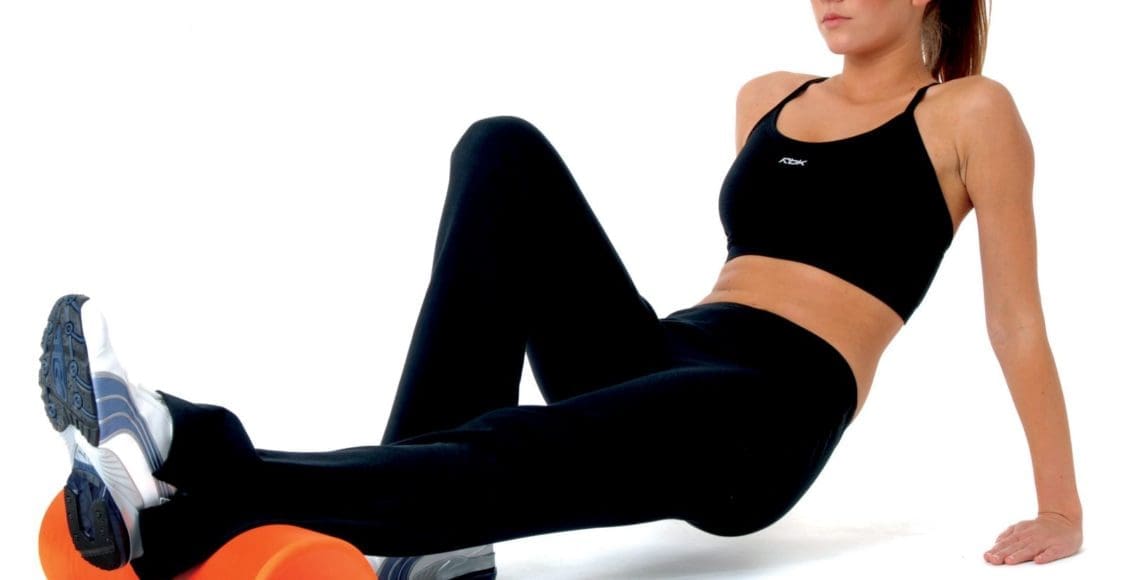Self-myofascial release, also known as “foam rolling,” has changed from a once mysterious technique used solely by professional athletes, athletes, and therapists to a familiar everyday method for people at all levels of fitness.
Products, technology, and data have introduced an increasing array of training and recovery methods to the individual.
Self-myofascial release is a fancy word for self-massage, utilized to release muscle stiffness or trigger points. This technique can be performed using a foam roller, lacrosse ball, Theracane, or your own hands. By applying pressure to these painful areas, you are able to assist in the recovery of muscles and helping to restore them. Proper function means your muscles are healthy, elastic, and ready to perform at a moment’s notice.
Table of Contents
Determining Tight Muscles & Trigger Points
Trigger points are referred to as “knots” which form in muscles. They’re unique and may be identified once they begin to refer pain. Pain referral, for our purposes, may be described as the pain felt when pressure is applied to a single area of their body, but the pain is felt or radiated in a different area.
A common case of a trigger point is felt while foam rolling your iliotibial (IT) band as it causes pain to radiate up to the hip or all the way down the leg to the ankle. When rolling on tight/sore muscles you may experience pain or discomfort. It should be uncomfortable, but not unbearable, and it must relieve the symptoms, when you are done.
For many, deep tissue massage is simple to understand. Somebody is able to exercise the knots in your muscles, and it is commonly known that this process may be uncomfortable and occasionally painful. Because only you can feel what is happening, self-myofascial discharge provides the consumer the capability to control the recovery and healing procedure by applying pressure in precise places.
It is always suggested to consult with your physician or physical therapist to get therapeutic/sharp pain and receive approval prior to beginning self-myofascial release. You will be cleared immediately and your doctor will encourage the practice. Releasing trigger points helps reestablish appropriate movement patterns and pain free movement, and finally, to boost functionality. Utilizing stretching alone isn’t always enough to discharge muscles. Imagine a bungee cord with a knot tied into it and then envision stretching the cord. This creates tension, stretching the part of the muscle and the attachment points. The knot, however, has remained unaltered.

Foam rolling can assist in dividing these muscle knots, resuming normal blood flow and function. The aim to any recovery or corrective technique is to get you back to normal functioning’s point, as if nothing was ever wrong.
Causes of Trigger Points & Tight Muscles
Both have exactly the same contributing factors such as training, flexibility, movement patterns, posture, nutrition, hydration, rest, anxiety, and other lifestyle factors. Our bodies learn to compensate for what we throw at them daily, but we can transcend our ability to recover via intense workouts, bad posture, and other lifestyle factors.
Deep compression can help to break up or relax tight muscles and adhesions formed between muscular layers and their environment. Imagine you are currently tenderizing your muscles. They should be soft and supple as a baby’s muscles. If our muscles are not taken care of properly we can experience loss of motion that is debilitating.
The deep compression of self-myofascial release enables normal blood flow to return and the recovery of healthy tissue. The body wants to be healthy and strong, but an extra boost is required to attain optimum tissue and muscle health.
How Do I Know What to Foam Roll and How to Do It?
Areas to concentrate on can be identified in two different ways. The first is through screenings. When you have followed the two posts – screening and stylish hinge screening – and also have had struggles with either movement, foam rolling should be included by you into retrieval program and your workout. You may target you are currently focusing on.
If after using the foam roller your motion enhances, you’ve got a more specific plan to follow. Second, muscles and trigger points are discovered utilizing techniques’ listing below and researching every one.
To foam roll correctly, apply moderate pressure to a particular muscle or muscle group using the roller and your own leg. You should roll slowly, no longer than one inch. Pause for several moments when you find areas that are painful or tight and relax as far as you can. You should begin to feel that the muscle releasing, and pain or the distress should reduce.
If a place is too painful to use direct pressure, then change the roller and then apply pressure on the surrounding area and gradually work to loosen the entire area. The purpose is to restore muscles – it isn’t a pain tolerance evaluation. You could also use different objects to operate on muscles such as lacrosse ball, a tennis ball, Theracane, or Trigger Point Therapy Kit.

Never roll a joint or bone. Avoid your back. To target these muscles I advise using lacrosse or tennis balls. If you’re experiencing difficulties with your neck, refer these problems to an appropriate medical practitioner and need attention that is advanced.
What Happens After Foam Rolling?
You might be sore the next day. It should feel like your muscles are worked/released, but you shouldn’t push yourself to the purpose of excessive soreness. Drink lots of water, get enough sleep , and eat clean. Fuel your muscles and this can help flush your system. Before focusing on precisely the same place give it 24-48 hours.
The scope of our information is limited to chiropractic and spinal injuries and conditions. To discuss options on the subject matter, please feel free to ask Dr. Jimenez or contact us at 915-850-0900 . 
Additional Topics: Sports Care
Many athletes engage in frequent warm-up stretches and exercises before participating in their specific sport of physical activity, in order to avoid experiencing sports injuries. Although these can help prevent a variety of sports injuries, athletes may still suffer an injury as a result of an accident. From chiropractic care to surgery, in severe cases, sports care is important for athletes to continue participating in their specific sport of physical activity.
.video-container { position: relative; padding-bottom: 63%; padding-top: 35px; height: 0; overflow: hidden;}.video-container iframe{position: absolute; top:0; left: 0; width: 100%; height: 90%; border=none; max-width:100%!important;}

TRENDING TOPIC: EXTRA EXTRA: New PUSH 24/7®? Fitness Center
Post Disclaimer
Professional Scope of Practice *
The information on this blog site is not intended to replace a one-on-one relationship with a qualified healthcare professional or licensed physician and is not medical advice. We encourage you to make healthcare decisions based on your research and partnership with a qualified healthcare professional.
Blog Information & Scope Discussions
Welcome to El Paso's Premier Wellness and Injury Care Clinic & Wellness Blog, where Dr. Alex Jimenez, DC, FNP-C, a board-certified Family Practice Nurse Practitioner (FNP-BC) and Chiropractor (DC), presents insights on how our team is dedicated to holistic healing and personalized care. Our practice aligns with evidence-based treatment protocols inspired by integrative medicine principles, similar to those found on this site and our family practice-based chiromed.com site, focusing on restoring health naturally for patients of all ages.
Our areas of chiropractic practice include Wellness & Nutrition, Chronic Pain, Personal Injury, Auto Accident Care, Work Injuries, Back Injury, Low Back Pain, Neck Pain, Migraine Headaches, Sports Injuries, Severe Sciatica, Scoliosis, Complex Herniated Discs, Fibromyalgia, Chronic Pain, Complex Injuries, Stress Management, Functional Medicine Treatments, and in-scope care protocols.
Our information scope is limited to chiropractic, musculoskeletal, physical medicine, wellness, contributing etiological viscerosomatic disturbances within clinical presentations, associated somato-visceral reflex clinical dynamics, subluxation complexes, sensitive health issues, and functional medicine articles, topics, and discussions.
We provide and present clinical collaboration with specialists from various disciplines. Each specialist is governed by their professional scope of practice and their jurisdiction of licensure. We use functional health & wellness protocols to treat and support care for the injuries or disorders of the musculoskeletal system.
Our videos, posts, topics, subjects, and insights cover clinical matters and issues that relate to and directly or indirectly support our clinical scope of practice.*
Our office has made a reasonable effort to provide supportive citations and has identified relevant research studies that support our posts. We provide copies of supporting research studies available to regulatory boards and the public upon request.
We understand that we cover matters that require an additional explanation of how they may assist in a particular care plan or treatment protocol; therefore, to discuss the subject matter above further, please feel free to ask Dr. Alex Jimenez, DC, APRN, FNP-BC, or contact us at 915-850-0900.
We are here to help you and your family.
Blessings
Dr. Alex Jimenez DC, MSACP, APRN, FNP-BC*, CCST, IFMCP, CFMP, ATN
email: coach@elpasofunctionalmedicine.com
Licensed as a Doctor of Chiropractic (DC) in Texas & New Mexico*
Texas DC License # TX5807
New Mexico DC License # NM-DC2182
Licensed as a Registered Nurse (RN*) in Texas & Multistate
Texas RN License # 1191402
ANCC FNP-BC: Board Certified Nurse Practitioner*
Compact Status: Multi-State License: Authorized to Practice in 40 States*
Graduate with Honors: ICHS: MSN-FNP (Family Nurse Practitioner Program)
Degree Granted. Master's in Family Practice MSN Diploma (Cum Laude)
Dr. Alex Jimenez, DC, APRN, FNP-BC*, CFMP, IFMCP, ATN, CCST
My Digital Business Card




